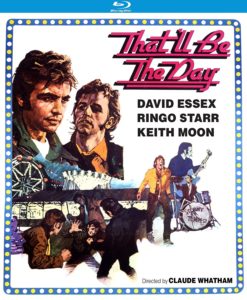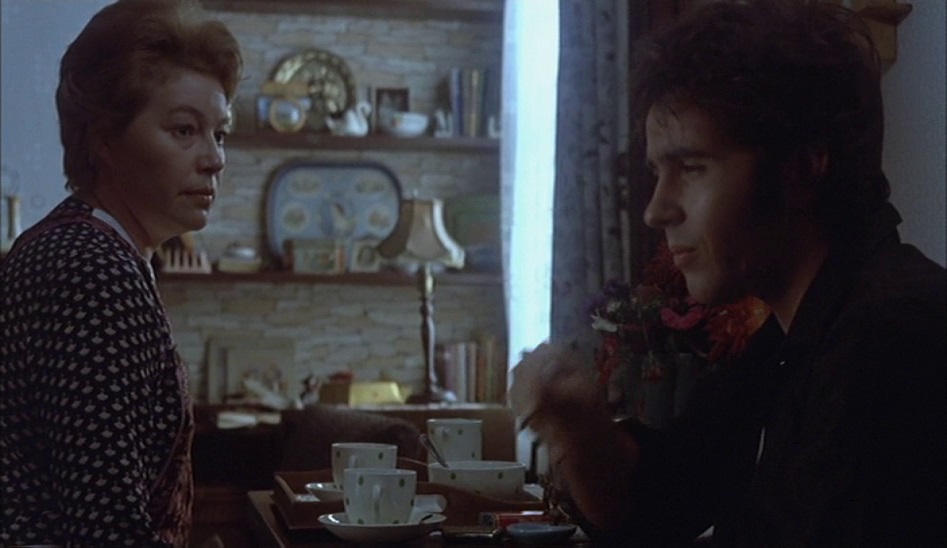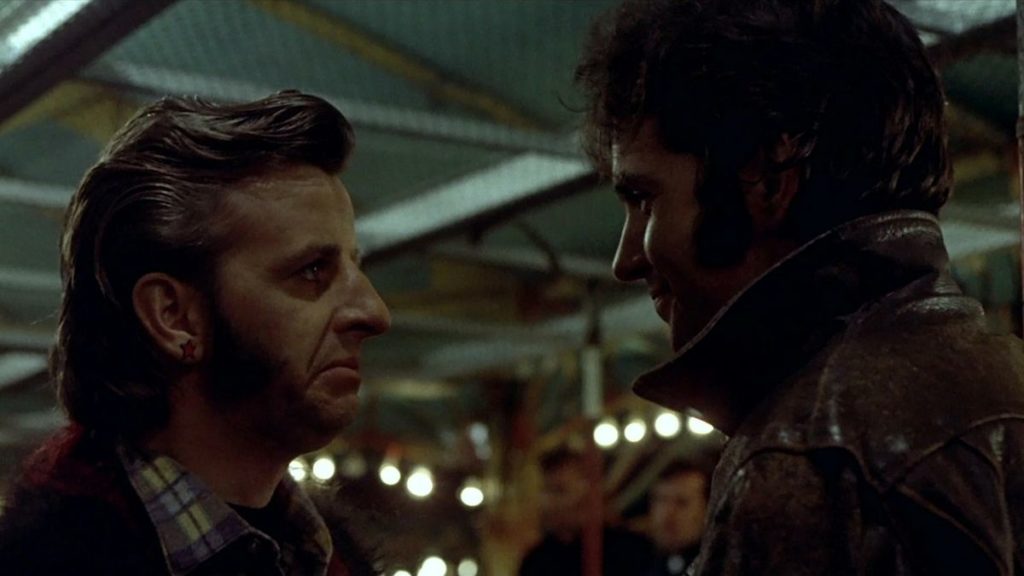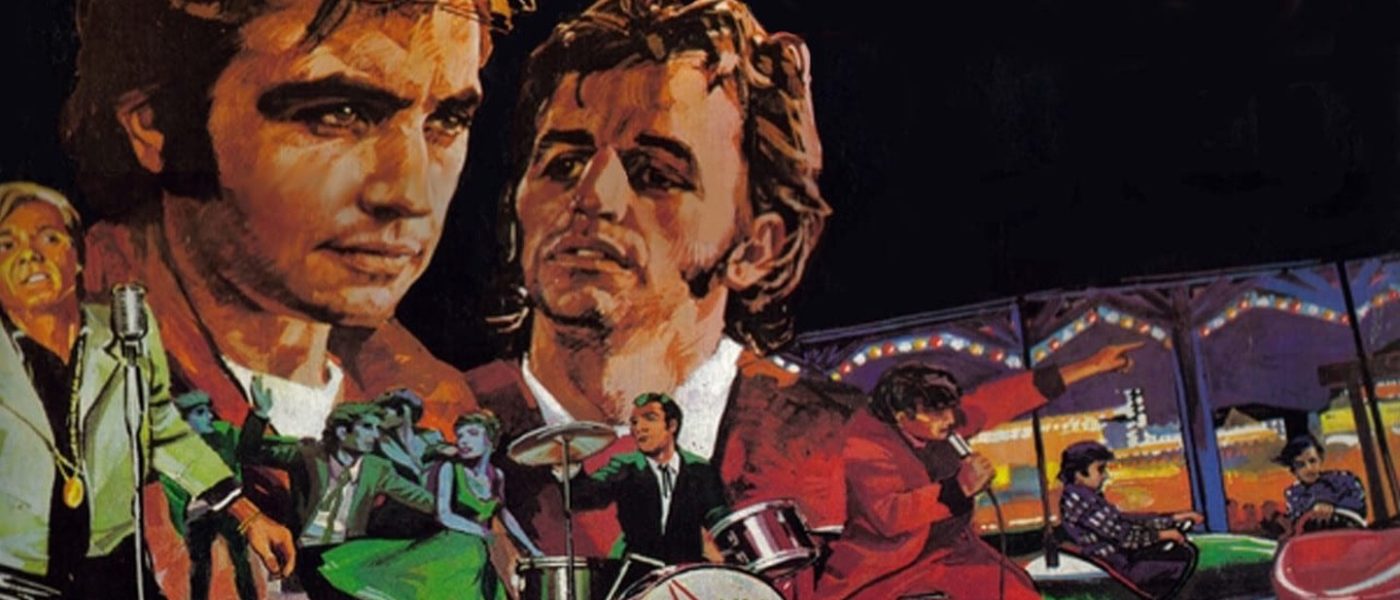Rockers David Essex, Ringo Starr, and Keith Moon Star in Darkly Tinged Nostalgic Drama.
DIRECTED BY CLAUDE WHATHAM/1973
BLU-RAY STREET DATE: JULY 7, 2020/KL STUDIO CLASSICS

Just because something is a cliché doesn’t mean that it isn’t true. Case in point: leave it to the British can make anything dour. Take for example the early days of rock n’ roll. Stateside, 1973 premiered George Lucas’s phenomenally successful American Graffiti; out of England, Claude Whatham’s mostly forgotten That’ll Be the Day hit screens. Both did quite well at the box office, though history now has different views of each.
In comparison (one that couldn’t have been rare in 1973, but certainly remains fair game), it’s not hard to see why Lucas’s little nostalgia-machine-that-could, with its feel-good look-back to “the mating rituals” of Modesto, California teens in innocent 1962, took off in people’s hearts. On the flipside, That’ll Be the Day, set in 1958, is an altogether different gaze into the music-driven hookup culture in its own English small town begins dark, and stays that way. (Behold the inky cinematography of Peter Suschitzky, who would go on to shoot numerous David Cronenberg films as well as The Empire Strikes Back for Lucasfilm).
With a soundtrack of wall-to-wall in-world oldies by the likes of The Everly Brothers, Dion & The Belmonts, Bobby Darin, Little Richard, and many more, That’ll Be the Day does indeed go head to head with American Graffiti not only terms of the quantity of vintage tunes, but in how and when they are used. More often than not, the song being spun is thematically commenting on the situation on screen. Graffiti gets the edge here, having achieved cinematically iconic moments via its own soundtrack (and accompanying soundscape), also thanks in part to its charismatic cast of familiar up-and-comers. (Ron Howard, Harrison Ford, Cindy Williams, Richard Dreyfus… the list goes on). But That’ll Be the Day does have one thing that Graffiti does not: actual rock stars. (The Who’s Keith Moon turns up in a small role-playing drums for an anachronistic performance of “Long Live Rock”, sung by pop star Billy Fury).

David Essex, best known for his 1973 hit “Rock On” (which is rightfully not played over the closing credits on the Blu-ray as it was for the film’s U.S. release) but is also an accomplished actor of stage and screen, plays Jimmy, a disaffected youth if ever there was one. As a child, his father walks out on him and his mother. Cut to teenage Jimmy (Essex), who will spend the rest of the film working up to that level of future anti-commitment. Hanging around the dismal town carnival, he’s not yet a lady’s man- though that will come.
Enter Ringo Starr in the role of Mike, the bad-influence buddy. A fellow carnival rat, Mike nudges Jimmy fully astray with almost no effort at all. Ringo’s part here is more substantive than possibly any other film role he’s occupied, though he clearly refused to cut his long-ish hair to a 1958 length or lose his star shaped earring, which no male in that time and place would’ve ever had. But he gets the job done, fully embodying the charming troublemaker and carnal carny lothario. Once Mike is in the picture, Jimmy starts tallying up numerous female conquests, resulting in a highly abnormal amount of sexual content for a PG-rated film. (Remember, this is a 1973 picture, replete with 1973-level permissiveness). None of it is depicted as anything other than icky and opportunistic, leaving little to like about Jimmy, whom we are stuck with.
That’ll Be the Day has been called the most accurate look back at youth life during the early days of rock n’ roll, which, considering the sheer mundanity of it all, seems entirely plausible. It’s also been identified as a fictionalized version of the early life of John Lennon, which is something of a leap. (Coincidentally, a very early 1958 Quarrymen cover of Buddy Holly’s “That’ll Be the Day” is the first vintage song featured on 1994’s Beatles- Anthology 1 CD set). While less pointedly tragic than the details of Lennon’s early life, That’ll Be the Day does ramp up to apparent rock stardom for Jimmy. Throughout the film, we are privy to his inner monologue’s poetic side, as he’s generating apparent lyrics for songs we never get to hear. The following year, however, Essex would return as Jimmy as a transatlantic rocker in the sequel Stardust, directed by Michael Apted. (No domestic Blu-ray release of Stardust has been announced).

The disc has a commentary track by entertainment journalist and author Bryan Reesman, which is both very impressive and exhausting. He’s done extensive research, having reached out to the film’s screenwriter Ray Connolly (who also wrote Stardust) via email, netting new facts to spare. But, in order to work it all into the film’s ninety-one-minute running time, he delivers information so fast that it sounds like we’re hearing it at 1 1/2x speed. Reesman leaves no stone unturned (and even works in a few personal details) which should please academics hungry for facts but will likely be too caffeinated for the casual viewer. Reesman literally never slows down; his speedy pace clashing with the often-laconic film itself. Aside from this commentary, there are several trailers for the film, and a few others including on the disc.
Glaringly imperfect in certain details (Ringo’s appearance; anachronistic songs) but resonantly authentic in others (general fashions, styles, attitudes), That’ll Be the Day is a mixed bag of a film. For those who prefer their nostalgia grim, somewhat internal and dark, this new Blu-ray edition from Kino Lorber Studio Classics (nailing Suschitzky’s persistent black levels in ways that online streaming struggles with) ought to shoot right to the top of their charts.


